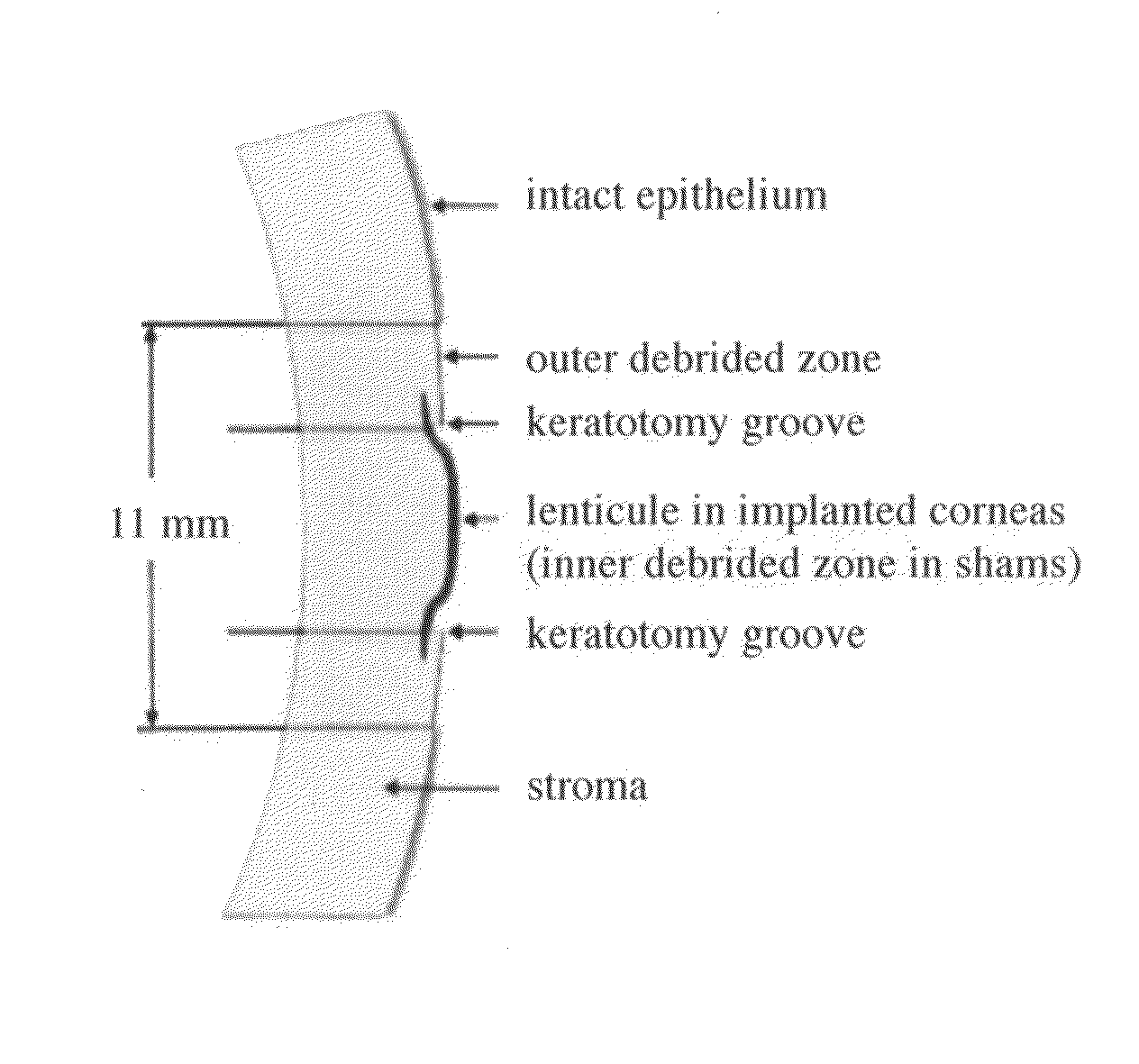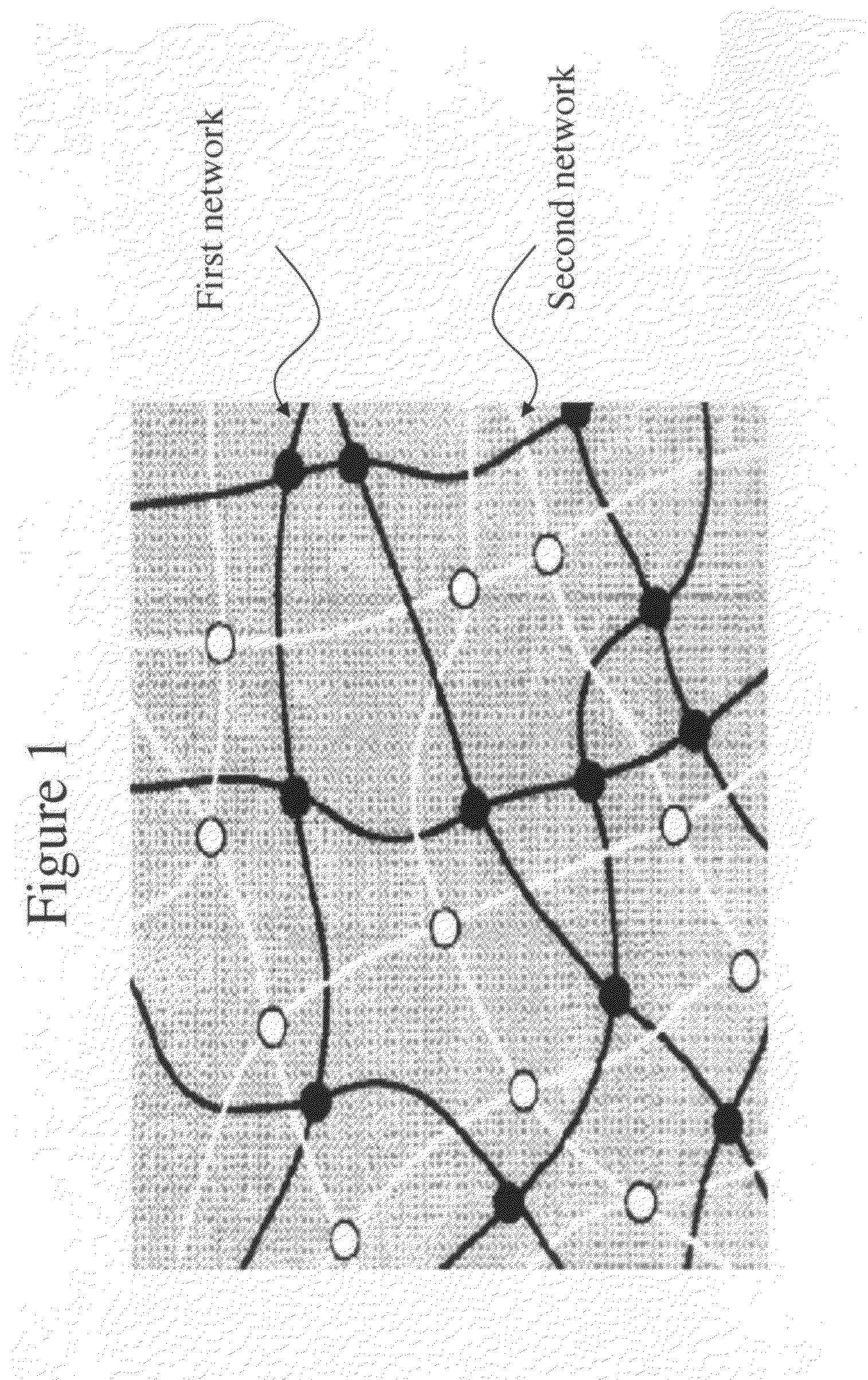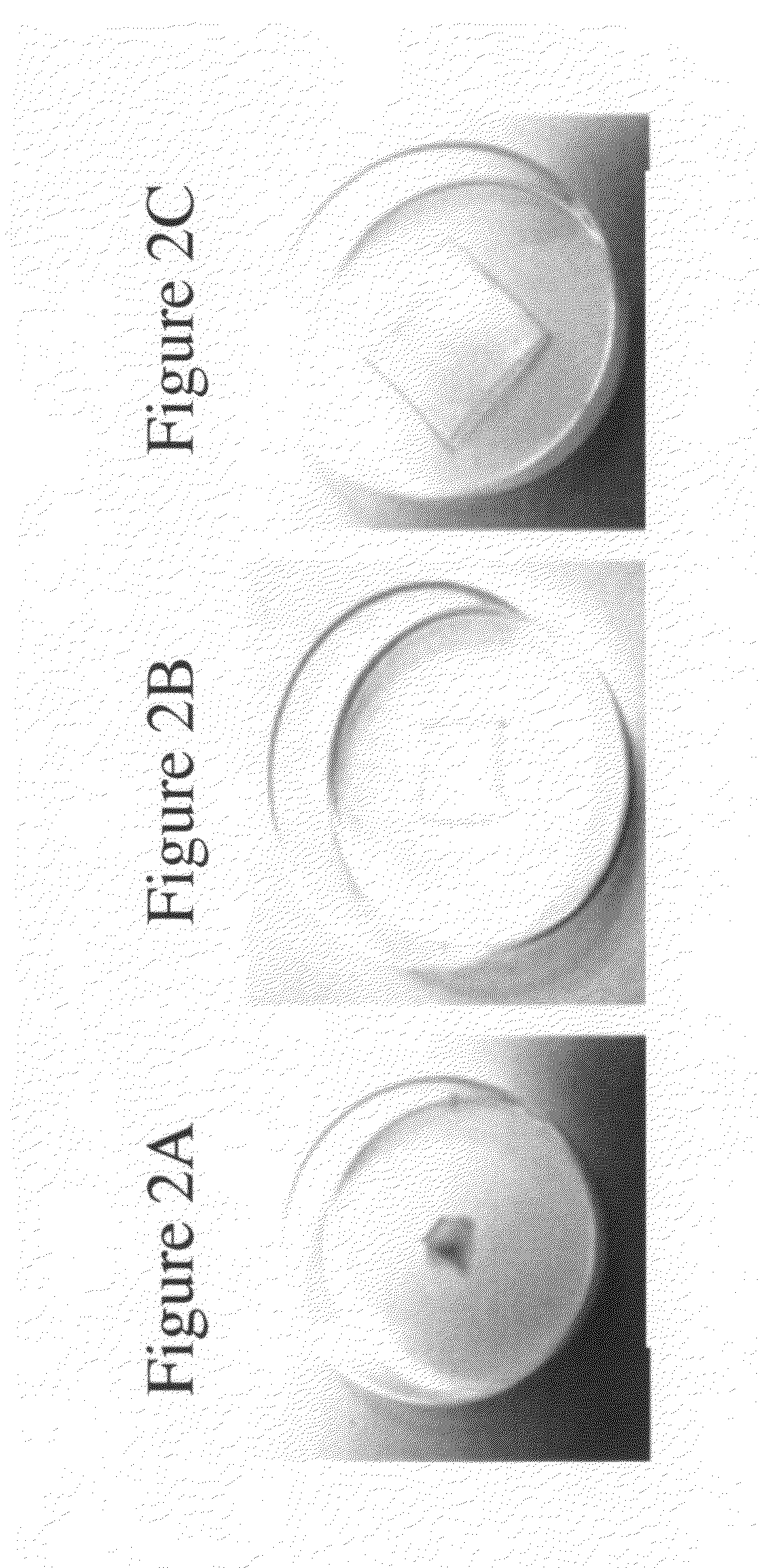Artificial corneal implant
a technology which is applied in the field of artificial cornea and corneal implants, can solve the problems of loss of vision, shortage of corneas in the future, and blindness, and achieve the effects of reducing the risk of blindness, and improving the quality of li
- Summary
- Abstract
- Description
- Claims
- Application Information
AI Technical Summary
Benefits of technology
Problems solved by technology
Method used
Image
Examples
Embodiment Construction
1. Double Network Hydrogel
[0023]The artificial cornea includes a double network hydrogel in which a first cross-linked network, is synthesized and then a second network is synthesized in the presence of the first. FIG. 1 shows a schematic example of a double-network structure with the intimate interpenetration of two cross-linked networks. Since there is no chemical bonding between the two component networks, each network can retain its own properties while the proportion of each network can be varied independently. Such a double network structure is e.g. capable to swell in water without dissolving and exhibits high mechanical strength as well as high water content, allowing for diffusion of nutrients (See Gong et al. (2003) in a paper entitled “Double-network hydrogels with extremely high mechanical strength” and published in “Advanced Materials 15(14):1155-1158 for a reference to mechanical strength of double network hydrogels).
[0024]For the purposes of the present invention, the...
PUM
 Login to View More
Login to View More Abstract
Description
Claims
Application Information
 Login to View More
Login to View More - R&D
- Intellectual Property
- Life Sciences
- Materials
- Tech Scout
- Unparalleled Data Quality
- Higher Quality Content
- 60% Fewer Hallucinations
Browse by: Latest US Patents, China's latest patents, Technical Efficacy Thesaurus, Application Domain, Technology Topic, Popular Technical Reports.
© 2025 PatSnap. All rights reserved.Legal|Privacy policy|Modern Slavery Act Transparency Statement|Sitemap|About US| Contact US: help@patsnap.com



